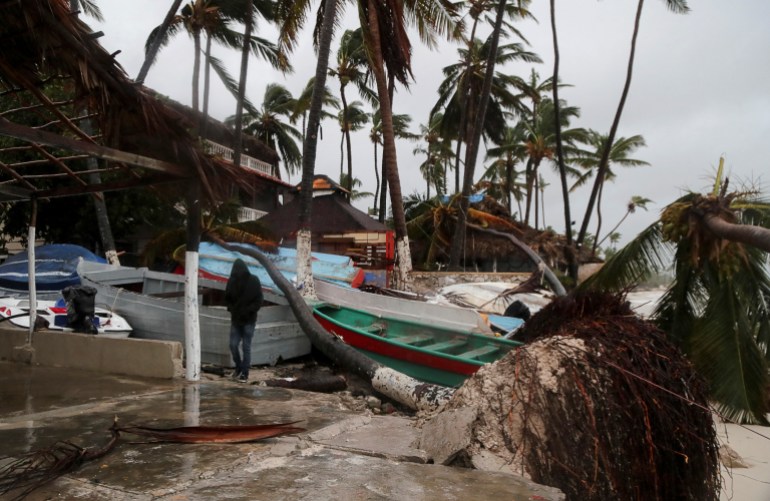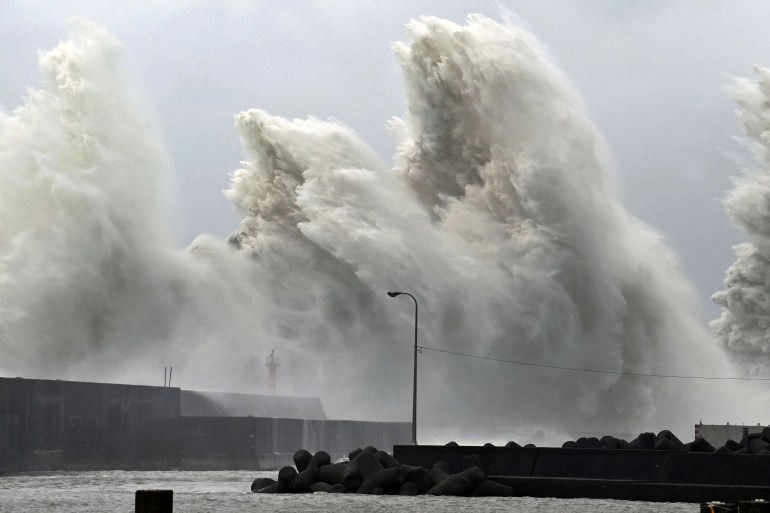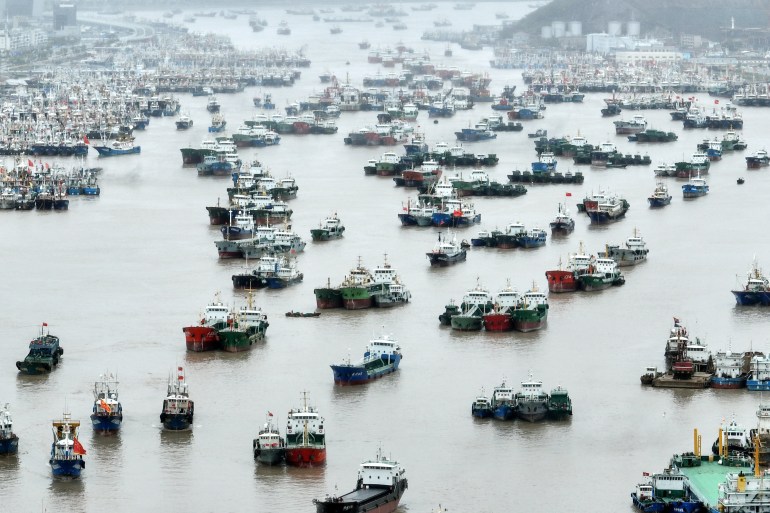With this year’s hurricane season under way, Al Jazeera visualises the differences between various storm systems and how they are formed.
Hurricanes, cyclones and typhoons are all essentially the same thing.
All three are storm systems with winds exceeding 119km/h (74 mph). The name differs based on where in the world the storm happens.
Hurricanes: Occur in the North Atlantic Ocean and Northeast Pacific, often affecting the US east coast and Caribbean. The strength of a hurricane is measured on a wind scale from 1 to 5. A Category 1 hurricane will bring with it sustained winds of 119-153km/h (74-95 mph) whereas a Category 5 storm can exceed 252km/h (157 mph)
Typhoons: Occur in the northwestern Pacific Ocean, frequently hitting the Philippines and Japan. Typhoon season is most common between May to October, but they can form year-round. The strength of a typhoon has various classification scales with the most severe storms named “super typhoons”.
Cyclones: Occur in the South Pacific and the Indian Ocean, often affecting countries from Australia all the way to Mozambique. Cyclone season is typically between November and April.

How does a tropical storm form?
Tropical storms form over warm ocean waters near the equator. As this warm air rises, an area of lower air pressure is formed. As the air cools down again, it is pushed aside by more warm air rising below it. This cycle causes strong winds and rain.
When this cycle gains momentum and strengthens, it creates a tropical storm. As the storm system rotates ever faster, an eye forms in the centre. The eye of the storm is very calm and clear and has very low air pressure.
When winds reach speeds of 63 km/h (39 miles/hour) the storm is called a tropical storm. When the wind speeds reach 119km/h (74 mph) the storm becomes a tropical cyclone, typhoon or hurricane.
2022’s destructive storms
Hurricane Ian – September
Hurricane Ian is growing stronger as it barrels towards western Cuba, where authorities have evacuated tens of thousands of people in preparation for heavy rainfall and “devastating” wind.
The Category 2 storm is expected to hit the Gulf Coast of the US state of Florida later this week and could intensify as a stronger Category 4 storm with top winds of 225km/h (140 mph).

Typhoon Noru – September
The Philippines’ most powerful typhoon this year hit the northern region of Quezon on September 25. The Category 3 storm killed five rescuers and cut power and communications lines.

Hurricane Fiona – September
The powerful Category 4 storm battered Puerto Rico, the Dominican Republic, Turks and Caicos, Bermuda and eastern Canada last week, leaving devastation in its wake and hundreds of thousands without power.

Typhoon Nanmadol – September
Typhoon Nanmadol, classified as a super typhoon, hit Japan’s southwestern coast on September 19, forcing millions to seek shelter from the powerful storm’s rain and wind. According to local media in Japan, at least 43 people were injured and about 300,000 households were without power.

Typhoon Muifa – September
Typhoon Muifa intensified and barrelled towards China’s coast and the key port cities of Ningbo and Zhoushan, making landfall on September 14. Ports and schools were shut as torrential rains swept through eastern and southern coastal areas.

Typhoon Hinnamnor – September
Ten people are reported to have died after the most powerful typhoon to hit South Korea in years battered the southern part of the country early this month, flooding roads, and buildings and causing landslides.

Typhoon Chaba – July
China’s first typhoon this year brought gales and rain to its southern shores, landing on July 2. At least 12 people were killed and over a dozen people were missing after a floating crane sank off the coast of Guangdong Province.

Cyclone Gombe – March
The intense tropical cyclone killed at least 53 people across Mozambique in early March, and injured at least 80 others. The storm completely destroyed 45,000 homes and partially destroyed 30,000 others.

Cyclone Batsirai – February
At least 120 people were killed, and more than 55,000 others were displaced after Cyclone Batsirai slammed into Madagascar’s eastern coast on February 5.
![The disaster relief agency said that of the deaths, 87 had occurred in one area, the Ikongo district in southeast Madagascar [Rijasolo/AFP]](https://www.aljazeera.com/wp-content/uploads/2022/02/000_9ZB7K6-1.jpg?w=770&resize=770%2C513)
